- Home
- Simon Winchester
Pacific Page 3
Pacific Read online
Page 3
The Pacific is an ocean of secrets. Castaways, runaways, fugitives of all kinds people its recent history: the first islands that a sailor heading north from the Strait of Magellan encounters are those volcanic relics of the Juan Fernández group—where the Fifeshire buccaneer Alexander Selkirk was marooned for four years, his adventures later memorialized by Daniel Defoe in Robinson Crusoe.
Much of the dirty business of the modern world has been conducted within the confines of the Pacific. The nuclear testing—by the United States in the Marshall Islands, by Britain on the Gilbert Islands, by France in its remaining Polynesian possessions—is well enough known. In 2008, when a secret American reconnaissance satellite got into trouble in orbit and needed to be shot down, the military ordered a navy ship specializing in missile attacks to bring it down over the Pacific, supposing the ocean to be so vast that it would be harmless there. The Marshall Islanders complained about what they saw as the Pentagon’s cavalier attitude, insisting that they lived in the ocean, as did millions of other islanders, and it was not some empty space on which any dangerous test might be performed at will. As it happened, the satellite was brought down locally, and the hydrazine rocket fuel hurt no one.
Still other experiments of equivalent unpleasantness have taken place on the U.S. Navy’s tiny islets of Johnston Atoll, some seven hundred miles southwest of Hawaii. United 154 flies above them, though they are seldom pointed out, and there is even less notice of what has gone on there. For years, any passing yachtsman, in mid-ocean, was confronted by huge signs warning him to move on—nothing to see here, “Deadly Force Authorized”—and patrol boats stiff with heavily armed naval guards would cruise offshore, keeping all the curious at bay.
Strange things went on there. Rockets carrying atomic weapons accidentally exploded, contaminating the island with plutonium and americium. Almost two million gallons of Agent Orange from Vietnam were stored there, and then their storage carboys split open, adding to the toxic mix. The atoll was next used for testing biological weapons, and after another accident a quantity of the bacilli that cause tularemia and anthrax were released upwind, and the island was contaminated once again. Then, in 1990, a huge incinerator was built that would destroy such chemical weapons as the United States still admitted to possessing. According to Pentagon statements, the list included: “412,000 bombs, mines, rockets and projectiles . . . four million pounds of nerve and blister agents . . . only one recorded incident for every 200,000 man-hours worked.” Then, in 2000, all work was stopped, the plant was broken up and carted away, the remaining pollution was said to have been cleaned up, and Johnston Island, ten times as big (thanks to landfilling) as it was when it was first found, was abandoned and offered up for sale. That’s when it was invaded by a vicious type of ant. Nowadays, passing yachtsmen—initially lured to the island out of curiosity, since they would no longer be confronted by armed police—like to stop there, if briefly. The island has become a National Wildlife Refuge, a memorial to the utter despoliation of the sea.
All this, of course, relates just to the Pacific’s islands, to some of the speckles and shards of territory that lie within the confines of the ocean. The stories to be found here and in a thousand other islands not so far mentioned are complicated enough, as the strange island-hopping odyssey of United 154 suggests. But to get a sense of the ocean as a whole, into this patchwork need to be stitched the fantastic cultural diversity and enormous power and scale of the countries that lie around the ocean, along its famous—and famously volcanic, and so infamously unstable—Pacific Rim.
Thanks to the dominant cultural bias of modern history, there is a topsy-turvydom inherent in any description of the rim. On its western side are the Eastern peoples: Chinese, Koreans, Japanese, Indonesians, Filipinos, and countless more if one chooses to push the ocean’s frontiers westward toward Indochina and India. On the eastern side are the national admixtures of the various migrated and now notionally Western peoples: Canadians, Americans, Central Americans, Colombians, Ecuadoreans, Peruvians, Chileans. Around the south and beyond to Oceania are the more newly settled outsiders of modern New Zealand and Australia. The aboriginal peoples—Native Americans, Aleuts, Inuit, Maori, Australian indigenes, the Canadian First Nation, and a host of others, all genetically Pacific peoples as we now know—remain dotted around or within the rim, where their recent experiences have become conjoined with those of the Polynesian islanders, the inhabitants of Melanesia and Micronesia, and so have been protected or decimated, exploited or revered (but never left alone), as the various histories of the newcomers have unfolded.
And to be stirred into this mix of peoples and cultures and politics and ambitions is a formidable array of other phenomena besides. There is the constant, complex, and often spectacularly violent interplay of tectonics, with volcanoes, earthquakes, and tsunamis in deadly abundance. The lands, seas, and seafloors of the Pacific are home to all manner of exotic and unfamiliar and yet-to-be-discovered wildlife. Mineral wealth exists in and around the Pacific in quantities that are beyond the most extravagant of human dreams—wealth that, if exploited, would bring a raft of unanticipated consequences. The environment, fragile everywhere, seems somehow to display a more obvious fragility in the Pacific, with its thousands of square miles of delicate corals, with its all-too-vulnerably low-lying atolls, with its cyclones and typhoons that are so much more vicious and destructive than even the worst to be found elsewhere.
For all its apparent placidity, the Pacific seems today to be positioned at the leading edge of any number of potential challenges and crises—whether they relate to politics or economics, to geology, to weather, to the supply of food, or to the most basic questions about the number of people that this planet can support.
The future, in short, is what the Pacific Ocean is now coming to symbolize. For if one accepts that the Mediterranean was once the inland sea of the Ancient World; and further, that the Atlantic Ocean was, and to some people still remains, the inland sea of the Modern World; then surely it can be argued that the Pacific Ocean is the inland sea of Tomorrow’s World. What transpires across these sixty-four million square miles of ultramarine ocean matters, and to all of us. Hence the need to write about it.
But how? How best to corral all that is important about the new Pacific—and by this I mean the Pacific in toto, the ocean considered shore to shore, pole to pole, and not just the modern and very limited convention of “Asia-Pacific,” which I do not want this book solely to be about—into a single comprehensible and digestible volume? What structure might suit this ocean’s story best?
For months it all seemed to me to be too overwhelmingly confusing—the body of water too monstrous, its narrative too insuperably challenging in its variety and vastness. Until one day, and quite by chance, when I came across a slim volume which was published in Germany almost a century ago, and which seemed to offer me a way, a structural vade mecum.
I came across it while I was reading as much as I could about those two very early Europeans who had reached out first to see, and then to cross, the ocean that had hitherto existed only in their respective imaginations. The men have become legends: there was Vasco Núñez de Balboa, who first sighted its blue gleam below him from Darién in September 1513; and there was Ferdinand Magellan, who seven years later made transit across Patagonia through the strait that now bears his name, entered the Pacific, named it mare Pacifico, and then sailed clear across it into history (and, as it happens, to his own unanticipated and violent death).
Not surprisingly, the stories of both men have been told by many. As I was doing my own reading I came quite by chance and in quick succession across two accounts, both by the same author, that seemed possessed of a certain luminous quality, and were markedly different from all the others in scope, in scale, and in style. Both were by the Austrian author Stefan Zweig—a 1920s writer mostly forgotten now, though his appearance as “The Author” in Wes Anderson’s 2014 movie The Grand Budapest Hotel has lately revived his memory, some
what.
It was Zweig’s succinct and poetic account of Balboa that I found particularly alluring. It was contained in a book, published in 1927, that has perhaps suffered under more titles than any book deserves. In its original German it was Sternstunden des Menschheit, or Great Moments of Humanity. The first English translation was The Tide of Fortune, and then came Decisive Moments in History, and most recently, Shooting Stars. But whatever the book was called, its essence remains the same: it was a slender collection of ten ruminative essays, each one turned to perfection, about what Zweig considered to be seminal moments in the tide of human experience.
The writer chose his subjects eccentrically, but always interestingly. Balboa’s expedition across the isthmus was first; the defeat of Napoleon at Waterloo another; Scott’s failed expedition to the South Pole, a third. He then wrote of Handel’s composing The Messiah, of the fall of Byzantium, the death of Cicero and the writing of “La Marseillaise.” He told also an extraordinary version of the saga of Lenin and the sealed train that had taken him through war-torn Europe to Finland Station, to stage his Russian Revolution. The result is a tumbling mélange of a book, quite charming and, even if perhaps lacking in academic rigor, one that quite transfixed me.
So after many attempts to corral the wealth of material about the Pacific Ocean into one manageable whole, I chose for this account to attempt to ape the master, to create a modified version of Stefan Zweig’s approach of almost a century ago. I decided I would sift through the events of the modern Pacific to try to find my own galaxy of shooting stars—of truly pivotal moments in the story of this vast acreage of ocean. I would choose a scattering of happenings each of which, to me at least, seemed to betoken some greater trend, and which might tell in microcosm a larger truth about the Pacific than the moments themselves suggest.
From a mass of such occurrences I could distill and weed and cull, and then decide which of the remainder truly said something significant about how the ocean, and the perception of the ocean, was developing and perhaps evolving: which events, in other words, indicated the direction in which the Pacific was shifting, as it moved to play its defining role in the future of the world.
So I made a list. I scoured newspapers and history books and databases and academic papers, and came up with some hundreds of more or less notable occurrences between January 1, 1950—a date chosen for a reason I will explain later—and the time I began to write this book, in the summer of 2014.
The cutting room floor was eventually to be buried under a blizzard of possibilities. I was fascinated, for instance, by the postwar reincorporation of the Japanese into the mainstream of Pacific life, and thought that stories from the aftermath of the notorious internment of Japanese American citizens might illustrate their welcome return to the world stage. I thought, more trivially, of the opening of a slew of Pacific Disneylands, first in Anaheim in 1955, then in Tokyo in 1983, and in Hong Kong in 2005, and wondered about the spread of America’s cultural impress on the people around and within the ocean. I thought about the lasting social consequences of the staging of Olympic Games in such Pacific cities as Melbourne, Tokyo, and Seoul. I wondered similarly about the social effects of invention of the Boeing 747-400, a plane made on the Pacific coast, an aircraft built specially to cross the entire ocean without refueling, in one bound.
The list went on and on. What of the significance of pollution—so poignantly symbolized by the Minamata disease that was identified in May 1956? What of the impact of the first television service that began in Australia, in September, four months later? Of the Watts Riots in Los Angeles that erupted in 1965? The My Lai Massacre that took place in Vietnam in March 1968, and the shooting of Bobby Kennedy in Los Angeles on June 6 of that same year? The time when more than seven hundred members of the Unification Church were married in a ceremony in Seoul in 1970, and when twenty-six members of the Heaven’s Gate cult neatly killed themselves in San Diego in 1997? What followed on from Richard Nixon’s visit to the People’s Republic of China in 1972—the first by an American president—and from Queen Elizabeth’s visit later on, in 1986? What of the consequences of the Chilean Communist Party’s formation in 1979? Or the disappearance of the “Dingo Baby” near Ayers Rock in Australia in 1980? The time when President Marcos was overthrown in the Philippines in 1985? The death of the last Hawaiian black-faced honeycreeper in 2004? News that a bridge had been built over the Eastern Bosphorus in Vladivostok in 2012? Or the curious time when Tonga, in 2014, signed a military agreement with the Nevada National Guard?
Rich though all this might be, there was still richer fare to consider. In the end, I chose just ten singular events, some of them portentous, some more trivial, but each appearing to me to herald some kind of trend. They showed, and in chronological order, a series of developments that, when accumulated as one, depicted an image, perhaps more pointillist than precise, of the ocean as it had arranged itself in the past sixty-five years; and that also hinted at the way the ocean might evolve through the near future. The wisdom or otherwise of these choices is what, of course, will determine whether this portrait of the ocean is judged to be fair and right. Naturally I hope it is considered so.
I decided to begin with the acceptance of a singular and distasteful reality: that the Pacific, despite what Ferdinand Magellan experienced when he first sailed into it, is anything but a pacific ocean; it is in fact, and more than any other, an atomic ocean. More dangerous than that, it is the ocean where most of the world’s thermonuclear weapons have been tested, and has been ever since the beginning of the story, in January 1950. The story of Bikini and of the hydrogen bombs then tested there allows for neither praise nor admiration. At the same time, though, it serves as a reminder of the terrible toll atomic weaponry has already exacted on humankind—mostly to innocent Japanese civilians, of course—and so is part of the ocean’s story, helping to define its past, present, and future.
Then, in a more cheerful vein, I chose the invention, four years later, of the transistor radio and the subsequent formation of the Sony Corporation. It seemed to me that these and other connected events of the early 1950s not only illustrated the energy, tenacity, and technical brilliance of the postwar Japanese, but also demonstrated the beginning of a pattern of eastbound transpacific trade that still dominates the ocean’s story to this day. Maybe the early Japanese technicians were eventually to be overtaken in some fields by the Koreans, and the Koreans in turn by the Chinese, but the endless procession of heavily laden cargo ships passing eastbound, inbound, beneath the Golden Gate Bridge is testament to a trend that was started by Japan, and to the long-ago makings of a tiny wireless set that would fit inside a cunningly enlarged shirt pocket.
Surfing—not so trivial as it may initially seem, just like the charmingly slight American film that made it popular in what would shortly become the biggest of all surfing markets—is a gift from the Polynesian Pacific that is today worth billions. This ancient, graceful pastime of wave gliding, once so central to the aristocracies of Hawaii and Tahiti, deserves proper consideration—in the same way that football and cricket must not be overlooked elsewhere—to help fathom the ocean in which it was born, and the peoples who gave it birth.
I have traveled in North Korea several times, and in 1987 was sorely frustrated in an attempt to walk the entire length of the peninsula when, after three hundred miles, my way forward was firmly blocked by frontier fences and a pair of burly American sentries. Once, and very briefly, I harbored some small secret sympathy for a North Korean regime that in its earliest days was guided by an intense desire to follow its own path to economic and cultural independence; now the regime has become such a byword for domestic cruelty and international insanity that it can hardly be ignored. Its role as perpetual irritant is an unattractive aspect of today’s Pacific, but a crucial one.
The reincorporation of Japan and the other native Pacific peoples—of American Indians, Australian aboriginals, Maoris, and Pacific Islanders—into the running of their ocean
’s affairs has been matched, in more recent years, by the steady, though seldom peaceable, withdrawal of colonial powers from the region. To begin this chapter, I chose one symbolic event, the sabotage and fatal fire on a British ocean liner in the waters of a British Pacific colony, to allow me to tell the stories of a number of colonists’ retreat: the French from Indochina; the Americans from Vietnam; the withdrawal elsewhere of the Dutch and the Portuguese; and from everywhere remaining, the otherwise near-ubiquitous British. The Pacific peoples are more firmly on their own at last, as they should have been for centuries past.
Except, maybe, in Australia. The role that this one continental country will play in the future remains a mystery to most—in Australia as among its millions of neighbors. Australia is an overwhelmingly non-Pacific nation on the western edge of the ocean: Does it fit? Can it fit? Will it exert a regional force for good, in the short term or the long term, or ever?
Then there are the more technical considerations: of the Pacific as the fons et origo of the world’s weather patterns; of the Pacific as the bellwether of the environmental dangers the planet as a whole must necessarily confront; of the Pacific as the epicenter of most of the world’s lethally dangerous tectonic mayhem; and in part as a consequence of that, of the Pacific as the source of almost unimaginably vast undersea resources, which the world can plunder or preserve as it wills.

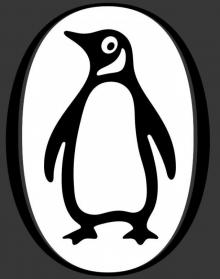 The Surgeon of Crowthorne
The Surgeon of Crowthorne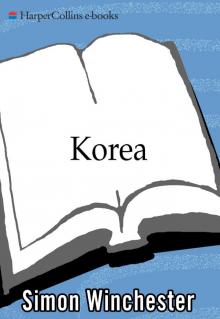 Korea: A Walk Through the Land of Miracles
Korea: A Walk Through the Land of Miracles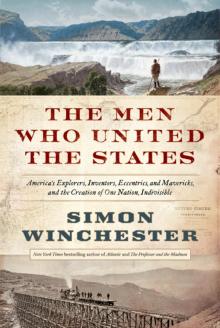 The Men Who United the States: America's Explorers
The Men Who United the States: America's Explorers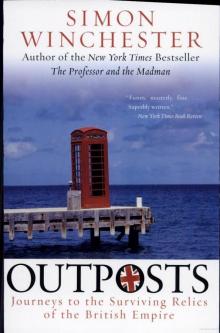 Outposts: Journeys to the Surviving Relics of the British Empire
Outposts: Journeys to the Surviving Relics of the British Empire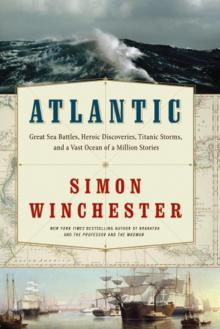 Atlantic: Great Sea Battles, Heroic Discoveries, Titanic Storms
Atlantic: Great Sea Battles, Heroic Discoveries, Titanic Storms The Professor and the Madman: A Tale of Murder, Insanity
The Professor and the Madman: A Tale of Murder, Insanity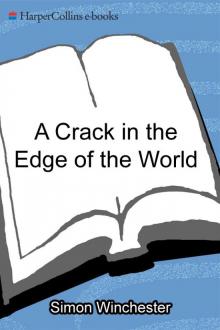 A Crack in the Edge of the World
A Crack in the Edge of the World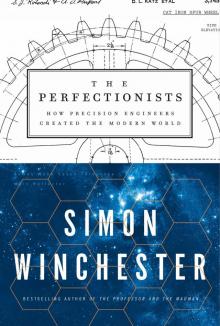 The Perfectionists: How Precision Engineers Created the Modern World
The Perfectionists: How Precision Engineers Created the Modern World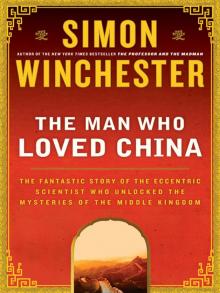 The Man Who Loved China: The Fantastic Story of the Eccentric Scientist
The Man Who Loved China: The Fantastic Story of the Eccentric Scientist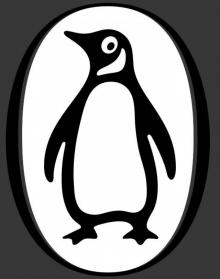 The River at the Center of the World: A Journey Up the Yangtze
The River at the Center of the World: A Journey Up the Yangtze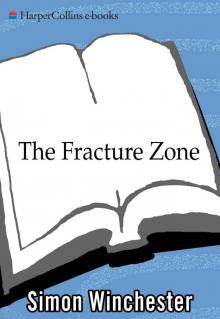 The Fracture Zone: My Return to the Balkans
The Fracture Zone: My Return to the Balkans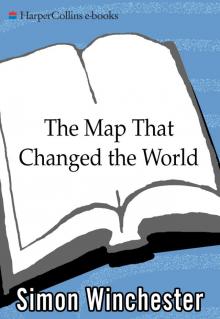 The Map That Changed the World
The Map That Changed the World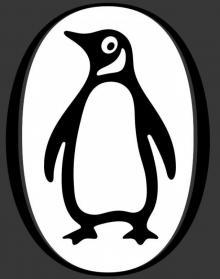 Krakatoa: The Day the World Exploded
Krakatoa: The Day the World Exploded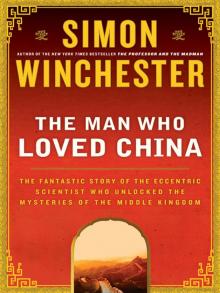 The Man Who Loved China
The Man Who Loved China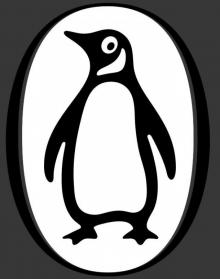 The River at the Centre of the World
The River at the Centre of the World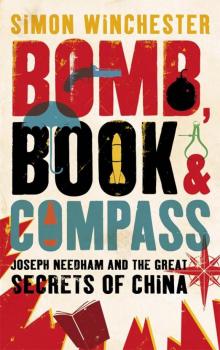 Bomb, Book and Compass
Bomb, Book and Compass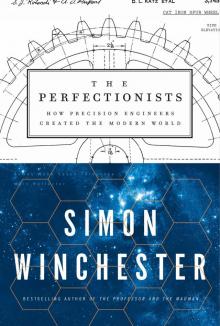 The Perfectionists
The Perfectionists The Meaning of Everything
The Meaning of Everything Exactly
Exactly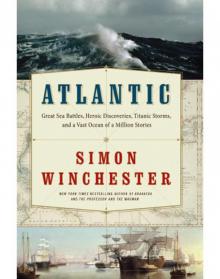 Atlantic
Atlantic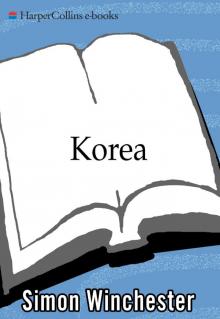 Korea
Korea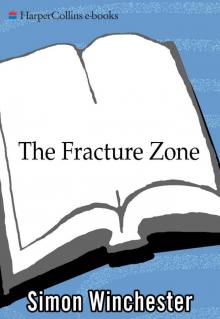 The Fracture Zone
The Fracture Zone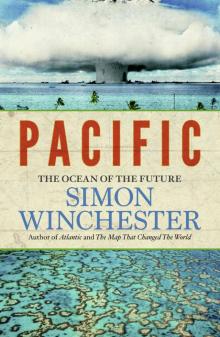 Pacific
Pacific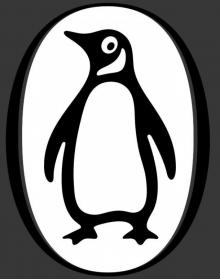 Krakatoa
Krakatoa The Professor and the Madman
The Professor and the Madman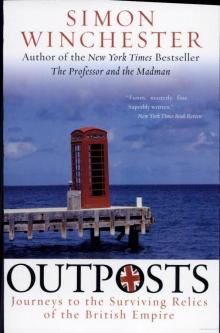 Outposts
Outposts